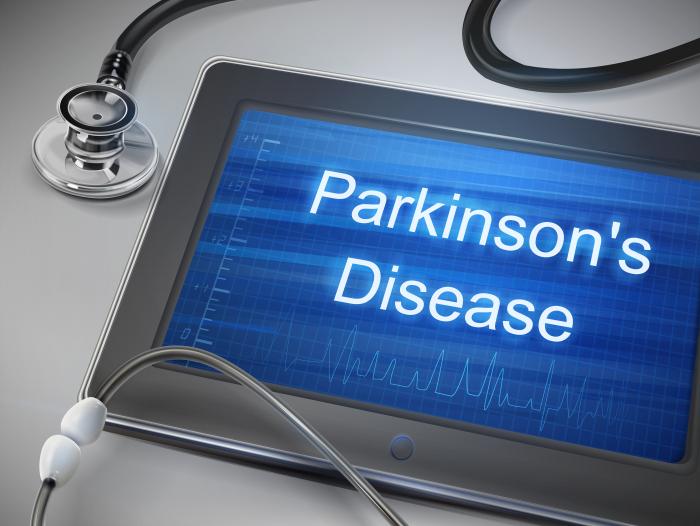Parkinson’s disease is a disease in which a certain type of neurons that produces dopamine dies. In the modern world medicine is developing by leaps and bounds, and people’s life expectancy is increasing. In response to this, we are faced with age-related diseases more and more often. Parkinson’s disease is one of such pathologies.
Clinical manifestations
In most patients, symptoms of Parkinson’s disease (PD) begin gradually. Often the first symptom is tremor of an resting arm. Tremor is:
- Slow and rough.
- More pronounced at rest, decreases with movement.
- Exacerbates with emotional stress or fatigue, its amplitude increases.
- The wrist and fingers are often affected, sometimes with the involvement of the thumb, which moves in opposition to the index finger (the movement is similar to rolling a tablet or other small object in the palm).
As a rule, at first the hands or feet are affected, more often asymmetrically. Tremor of the lower jaw and tongue may also be observed. The severity of tremor may decrease with the disease progression.
What cells are used to treat Parkinson’s disease?
The first research of stem cell therapy for Parkinson’s disease was conducted over 10 years ago. Since then, many clinical trials have been conducted to optimize this treatment method.
Stem сells used to treat Parkinson’s disease are called induced, pluripotent stem cells.
These are cells that have signs of stemming. That is, using special cell stimulation any type of cells can be obtained from them. They are not obtained from embryonic tissues, they are obtained by processing own patient’s cells. We can take skin cells, process them in a certain way, return them to the state of stemming, and cultivate them in order to receive the sufficient amount.
How do stem cells help treat Parkinson’s disease?
Using this method at the early stages you can slow down the progression of the disease or completely stop its development. After receiving pluripotent stem cells from the patient’s body, cells are induced to differentiate into neurons and, in particular, dopaminergic neurons. Simultaneously, doctors check these cells for all chromosomal rearrangements and for some other pathologies. Cells are introduced back to patients. They replace function of dead neurons.
For patients who want to receive stem cell therapy for Parkinson’s disease in Germany, it’s more convenient to contact Booking Health. Having many years of experience in working with patients and knowing the specifics of the disease, Booking Health will select the most specialized clinic. Thanks to many years of cooperation with German clinics, patients do not have to pay a tax for foreigners, which can almost double treatment prices.
Diagnostics of Parkinson’s disease
Diagnostic of Parkinson’s disease (PD) starts from the clinical assessment. It can be suspected in the presence of a characteristic unilateral tremor, hyperkinesis, muscle rigidity.
During a finger test the tremor disappears (or weakens). During a neurological examination patients cannot perform rapidly alternating or fast sequential movements well. Sensitivity and muscle strength are usually unchanged. Reflexes also change, but difficulties may arise when triggering them due to severe tremor or muscle rigidity.
It is necessary to differentiate the slowdown and decrease in the amplitude of movements in PD from impoverishment of movements and spasticity in lesions of the corticospinal tract.
In the elderly people other possible causes of similar symptoms should be excluded. These are severe depression, hypothyroidism, the use of antipsychotic or some antiemetic drugs.
Rehabilitation in patients with Parkinson’s disease
A set of rehabilitation measures is selected taking into account the clinical manifestations of Parkinson’s disease. Non-drug neurorehabilitation includes:
- Kinesiotherapy, which can be divided into the active (exercise therapy) and passive (massage, manual therapy, simulators).
- Correction of speech disorders.
- Correction of cognitive impairment.
- Diet.
- Physiotherapeutic methods.
Physical exercise contributes to prevention and significantly reduces existing contractures, reduces severity of stiffness and tremor. At the moment, the important role of physical exercises in slowing down the development of the degenerative process, activating a complex of mechanisms that counteract damaging factors in the brain has been proven experimentally.

Leave a Reply